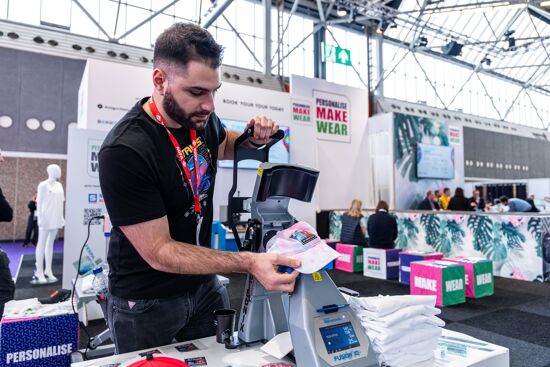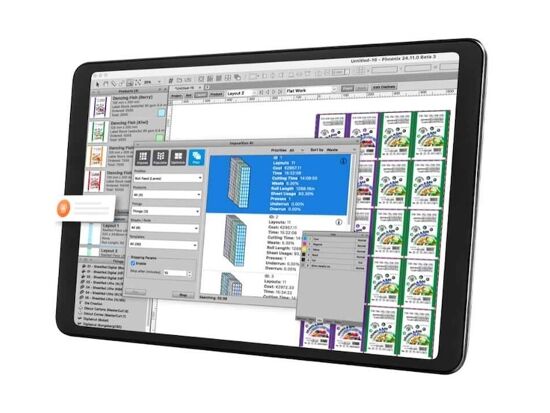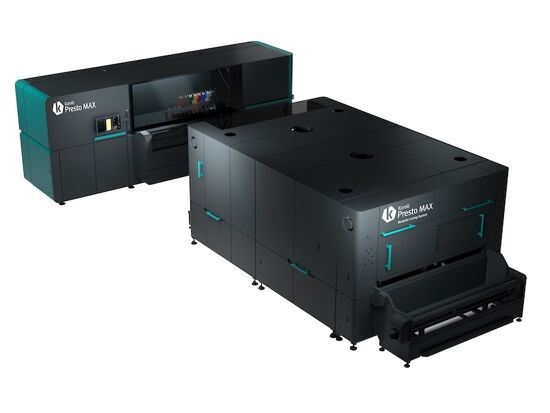Industrial, functional print and printed electronics: Is there a difference?
Industrial print is a term that has increased in popularity in recent years yet despite this, definitions of what exactly is entailed by industrial print vary enormously.
'Industrial print' is a subject that has moved to the top of the agenda within our industry over the past few years. This is as a consequence of growth of print technologies and the need for traditional graphic arts to extend its reach beyond the publishing and visual communications environment in search of new revenue streams.
Yet despite this, definitions of what exactly is entailed by industrial print vary enormously and to complicate things further, concepts such as 'functional print' and 'printed electronics' have also started to grow in prominence. The key question is whether we are talking about branches of the same topic or distinctive areas? The answer is not a simple one.
We will be discussing the much talked about areas of industrial print, functional print and printed electronics. In addition to trying to define where the borders between these specialisms lie, we will explore some of the applications within each, as well as the technologies used to produce them.
First of all, let us try to define industrial printing, functional print and printed electronics, at least in principle.
One of the best definitions was provided by Frank Romano, Professor Emeritus at Rochester Institute of Technology in a blog for InfoTrends about the rise of these market segments, as well as their respective remits and technical extents. In his view, industrial printing: "encompasses a wide spectrum of printed components that are part of other products or consist of final products themselves.
Ink or other substances are deposited on a variety of paper and non-paper substrates with varying thickness and shape, using virtually every printing technology, for virtually every consumer, business, and manufacturing requirement." As such, 'industrial printing', as we call it today, has actually been done using printing processes such as screen, flexo, offset, pad printing and gravure for many years.
'Functional printing' on the other hand involves the placement of a printable substance to cause a functionality such as a thermo-chromic reaction or control of conductivity. The resulting product will have a specific form and function. Like industrial printing, functional printing has existed for decades. Finally, 'printed electronics' is a little easier to define. It entails depositing either conductive or optical inks onto a substrate to create active or passive devices such as smart labels, animated posters or components in other products.
Definitions aside, these segments bring an invaluable advantage to the print industry because they can give life to such an extensive range of applications. Industrial printing takes print outside of its 'comfort zone' and challenges it to meet the varied needs of a wide range of industries. Media and advertising, labels and packaging, as well as display and signage are not the only areas that can take advantage of industrial printing, functional printing and printed electronics. The textile and apparel, food and beverage, medical, security and interior decoration sectors are just some of the other fields that can benefit from these developments.
It could be reasoned that the current 'revamping' of industrial print's features and the re-establishment of its boundaries are due to three main factors: ongoing advances in the inkjet technology landscape, recent economic challenges and the need for the print community to look for novel and profitable avenues.
Although processes such as screen, flexo, offset and gravure have been used in both industrial and functional printing for many years, digital inkjet technologies are growing in precedence.
Jon Harper Smith, Marketing Manager Industrial at Fujifilm Speciality Ink Systems, embraces this interpretation. "The application of inks and print technologies to industrial processes has traditionally been the competence of conventional technologies," he comments. "However, inkjet technology has significantly improved in the last 10 years and is now becoming more approachable and suitable for industrial applications. At the same time though, it's fair to say that the sign and graphics sector is quite mature and needs to stretch its capabilities to exploit new business opportunities such as industrial print."
According to Harper Smith, the distinguishing feature of industrial printing is the inclusion of print as part of a manufacturing process and instead of as the driving force of a visually led project, as is usually the case in the graphic space. He cites the example of the production of a motor vehicle's dashboard, which is based on the treatment of plastic and in which print is in many ways of secondary importance to the functionality of the finished article.
Interestingly however, this application might be interpreted by other manufacturers as a typical example of functional print, which speaks volumes about the grey area between definitions of industrial and functional print.
Robin McMillan, European Marketing Manager Industrial Inks at SunChemical, believes that functional and industrial print are two sides of the same coin. More specifically, he prefers to talk about 'Functional Industrial Speciality Print', which he describes as: "a group of markets where printing is used as part of a manufacturing process or as a functional part of the end product."
McMillan points out that industrial print is often wrongly associated with print equipment featuring the high productivity and performance levels typical of an industrial environment. On the contrary, similar to the vision expressed by Fujifilm's Harper Smith, McMillan says that industrial print is a term to use in connection with every application that is not strictly graphic related or where the decorative element is incidental within the production process. For instance, a DVD manufacturer is focused on mastering, making, packing and distributing DVDs; printing on the discs is just one stage of the entire production process.
Considering printed electronics is slightly more straightforward. Although it has some synergies with functional print, printed electronics stand out as a distinct market. Transistors, semiconductors, nanoparticles and conductive inks distinguish printed electronics and set it apart from the other spheres of industrial print. The roots of printed electronics stem from the membrane switch and electroluminescent lamps markets, but today printed electronics extends far beyond this.
Why not enter the 'Functional Print' catagory in this years FESPA Awards, click here for more information and to submit your entry.
Topics
Interested in joining our community?
Enquire today about joining your local FESPA Association or FESPA Direct
Recent news

Special Effects in DTF Will Make Your “Prints” More Memorable
The DTF market is expanding with new vendors and innovations like multi-head printers enabling diverse ink options (spot, neon). Decorative films offer streamlined special effects. Keypoint Intelligence tested metallic and glitter films, noting varied ease of use and wash durability. New technology using adhesive and foil directly promises further creative advancements in DTF.

SmartHub – Expectations, opportunities and why you should attend!
The SmartHub at Personalisation Experience 2025 in Berlin will showcase personalisation and smart production opportunities across industries like textiles. Featuring a Smart Factory Trail with brands like Inkcups and Trotec, and a conference with experts discussing AI, mass customisation, and profit strategies, it offers insights into reducing waste and boosting efficiency through digital methods. Panel sessions will explore growth, automation in textiles, and smart manufacturing.

How is AI revolutionising Large Format Print?
Nessan Clearly discusses how AI in print relies on data pattern matching, already enhancing software for large format providers. He predicts that this will result in increased AI integration in workflow planning, job queue management, colour correction, image upscaling, and predictive maintenance via sensors and vision systems, ultimately streamlining operations and offering greater flexibility.

One Ink for All? Exploring Pigment in Textile Printing
Digital textile printing faces complexity due to diverse substrates requiring specific inks. The industry seeks a universal ink, with pigment ink showing potential. While traditionally for natural fibres, advancements aim to broaden its application, simplify processes by reducing pre/post-treatment, and improve sustainability, though challenges like hand feel on garments remain.